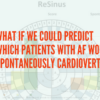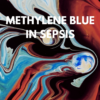If you haven’t caught the newly published Paramedic-2 trial, here’s a brief rant that tells you everything you need to know.
The ostensible reason for the publication has been the ongoing debate about the role of adrenaline in cardiac arrest. In fact the very first line of the paper reads “concerns about the use of epinephrine in the treatment for out of hospital cardiac arrest led the International Liaison Committee on Resuscitation to call for a placebo controlled trial to determine whether the use of epinephrine is safe and effective in such patients.”
Not a big thing to aim for at all, hey?
So what’s the bottom line?
I always get concerned when a study like this comes out, and I see statements (whether it be posted on Twitter or registrars in the tearoom) to the effect of “the evidence now says adrenaline makes no difference in cardiac arrest” .
Right at the start of this blog, I want to make clear my thoughts that I will still be using adrenaline for cardiac arrests, and I actually see Paramedic-2 as weak support for this position. Yes, it does start arguments at work when I say this.
The study itself was a randomised, double-blind trial, of 8114 patients with out of hospital cardiac arrests. It was conducted across five ambulance services in the United Kingdom with a placebo comparator, with approximately 4000 patients to each arm. The primary outcome was 30 day survival, with secondary outcomes of discharge from hospital with a favourable neurologic outcome, defined by everyone’s favourite cop out, the modified Rankin scale.
The thirty day survival in the adrenaline group was 3.2% and in the placebo group it was 2.4%. The 95% confidence interval was 1.06 to 1.82, with a p value =.02. Statistically that’s pretty good. The rub is when you look at the percentage of patients with a favourable neurologic outcome the difference was less impressive. In the adrenaline group 2.2% of patients have favourable outcome, compared to 1.9% placebo group. This time the confidence interval crosses the null value: 0.86 to 1.61. This seems to be where statements like “adrenaline makes no difference in a cardiac arrest” come from.
So how do I get from there to say I’m still doing adrenaline?
This comes down, a little bit at least, to how I interpret evidence. It’s statistically and scientifically incorrect to state that adrenaline is the same as placebo in this situation. The study was not designed as a test of equivalence. It was designed to examine whether there was a difference, and it found one. The difference is found in the proportion of absolute survivors, and also in the proportion of survivors of the good neurologic outcome. More survivors with good neurologic outcome occur when adrenaline was given. Statistically speaking, what we can’t be certain based on the P value (if you assume that there is in fact scientific validity in arbitrarily setting a p of 0.5 – but that’s a talk for a future EMCORE!), is whether or not the observed result considering good neurologic survival is due to random chance or the study effect applied.
Random chance, you say? There were 4000 patients in each arm! That’s true, but when you think of the already low occurrence of the primary outcome, and the number of variables that might affect it BESIDES adrenaline, 4000 patients per arm doesn’t look all that impressive. Perhaps – at least in my opinion – the most sensible thing that can be said about Paramedic-2 is this couplet:
- Paramedic-2 showed that adrenaline improved the survival of out of hospital arrest patients to discharge with a good neurologic outcome
- The study was underpowered to demonstrate with sufficient certainty that this was due to the administration of adrenaline, rather than random natural variation in the two study arms.
Anything else is simply not a valid conclusion based on an understanding of statistical methods.
Further when you pull the paper apart, the total numbers of survival to REACH hospital are much, much higher in the group given adrenaline compare to placebo. In fact more than 20%, (23.8% to be precise) of the adrenaline group survived to hospital. That was 947 patients. In the placebo arm only 319 patients, or 8% of the sample size actually made alive through a hospital door. For those of you familiar with the subject, this is almost exactly mirrors another trial undertaken in Western Australia a few years ago, with similar larger percentages of patients given adrenaline surviving to hospital arrival.
So what am I trying to achieve, when I’m giving adrenaline in cardiac arrest?
And the reality is here, that realistically as an emergency physician I’m playing for a ROSC. Being perfectly honest, anything else is just a bonus. When you think about the multitude of factors which might affect patient prognosis, including the underlying aetiology of the cardiac arrest, and the subsequent complications which may or may not be experienced in hospital pretty clear that there’s an awful lot of variables here that I cannot prospectively control no matter what I do in my resuscitation.
I see my location to my patient as being to give them a chance at life, and realistically that means restoring a heartbeat.
Given that only 130 patients in the treatment arm, and 94 patients in the placebo are survived 30 days, my view is that the study was, of course underpowered, to detect anything you outcome. This actual numbers for such a diverse group of patients then of course nothing statistically significant was found.
For me the bottom line of PARAMEDIC-2, is that giving adrenaline in cardiac arrest means that I am almost 4 times more likely to achieve a return of circulation. It means I am almost 4 times more likely to give my patient a chance of life than they would have if I did not give adrenaline.
Sitting here in my emergency department, that’s a compelling argument from Paramedic-2 for me to continue using adrenaline. Those who came to Hong Kong last year would have heard me make the same argument based on already existing evidence. When we become unarguably bulletproof with post arrest care, and sort out all the other controversies in management of this space, I’ll have a think again about whether adrenaline really is saving lives, or just creating more was poor outcomes. Until then I simply don’t think paramedic-2provides any justification for changing our existing practice.
If you don’t agree, make sure you come argue with me in Hong Kong over rooftop drinks!
Luke Lawton











And the reality is here, that realistically as an emergency physician I’m playing for a ROSC,For me the bottom line of PARAMEDIC-2, is that giving adrenaline in cardiac arrest means that I am almost 4 times more likely to achieve a return of circulation. It means I am almost 4 times more likely to give my patient a chance of life than they would have if I did not give adrenaline.
Completely convincing words.
I agree without reservation.